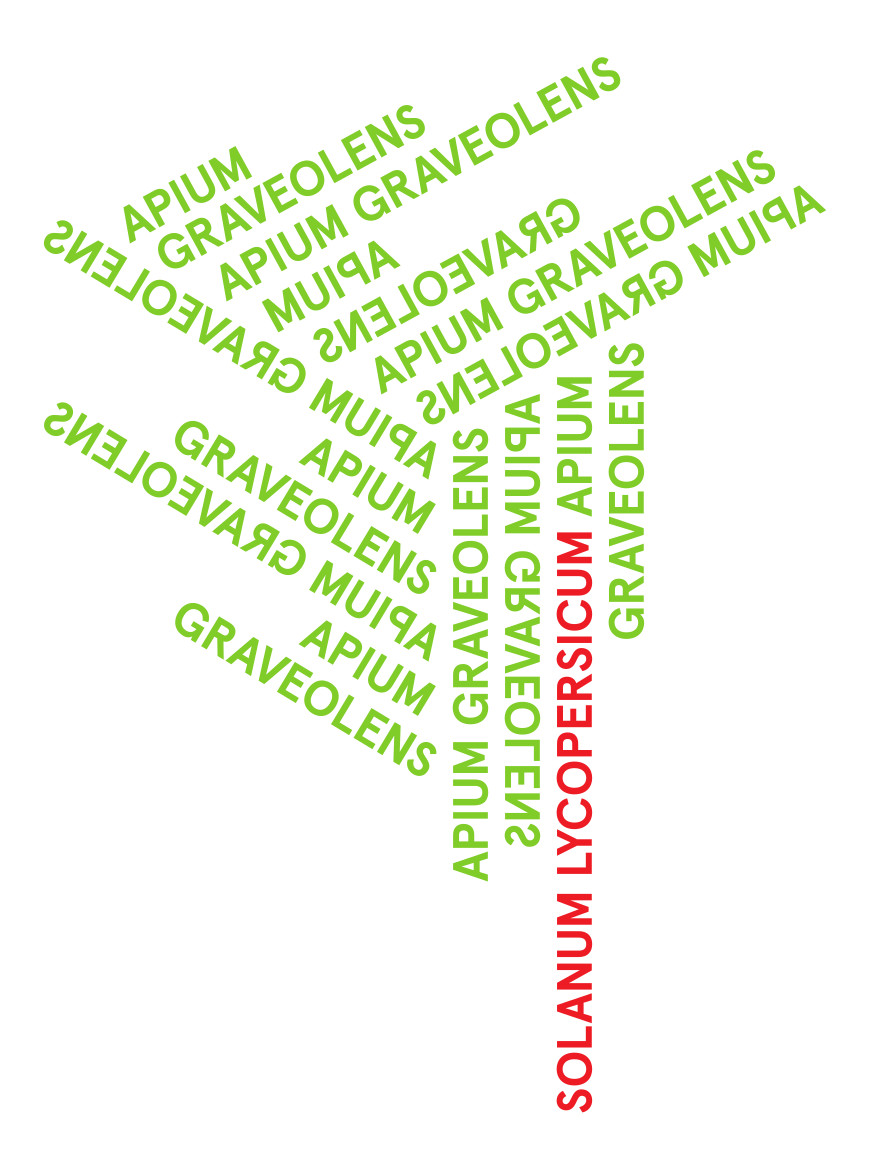Solanum lycopersicum (tomato)
Solanaceae (nightshade family)
Perennial herbaceous plant in its native environment, annual in cultivation, 50–150 cm in height, pinnate leaves, flowers yellow, in lateral coils; berry fruits of different size, shape and color. Dispersal by animals and humans.
One of the most important vegetable and salad plants, average consumption per person in Germany about 25 kg, of which two-thirds in processed products such as ketchup and tomato purée. Seeds often reach bodies of water through sewage treatment plants, often extended colonies on the banks of large rivers in late summer.
Native to South America, for instance to Peru. Introduced to Europe in 1600 as an ornamental plant. Cultivation as a crop in Germany only from 1870. Often wild and a neophyte in the process of naturalization.
Apium graveolens (celery)
Apiaceae (umbelliferae)
Herbaceous biennial plant with petioles, 30–100 cm high, flowering in the second year, then dying. Pinnate leaves, flowers and seed head in compound umbels. Dispersal by wind, animals and humans.
Grows wild on shores and inland salt flats. Frequently cultivated as a vegetable and spice plant in several varieties as root, blanched, perennial, stalk, and leaf celery, but especially as celeriac. Consuming the plant can lead to cross-sensitivities, therefore mandatory identification in food. Crop area in Germany in 2017 more than 2000 hectares.
Rare and endangered indigenous species in Germany, only one wild population in Baden-Württemberg. Natural area includes parts of Europe and West Asia.
